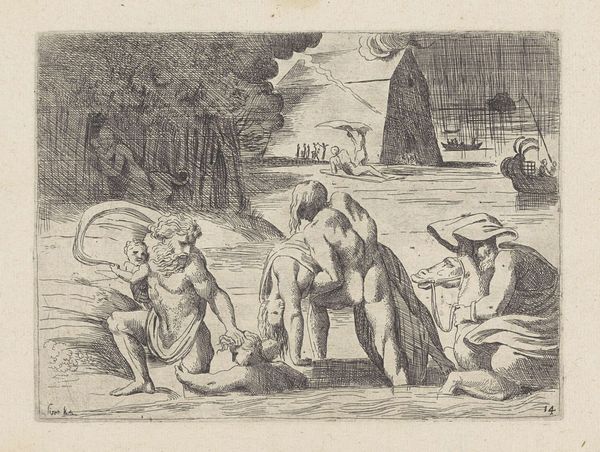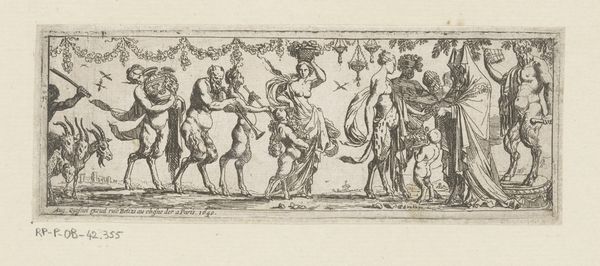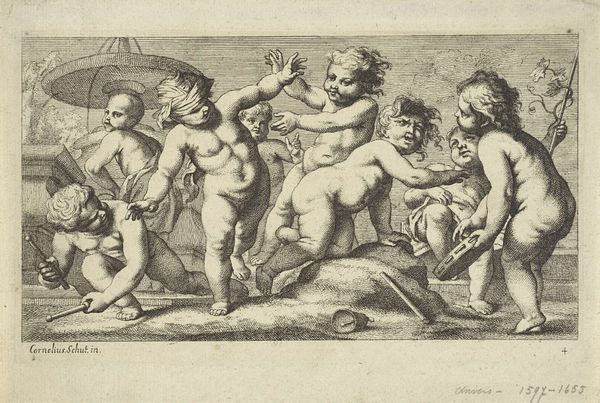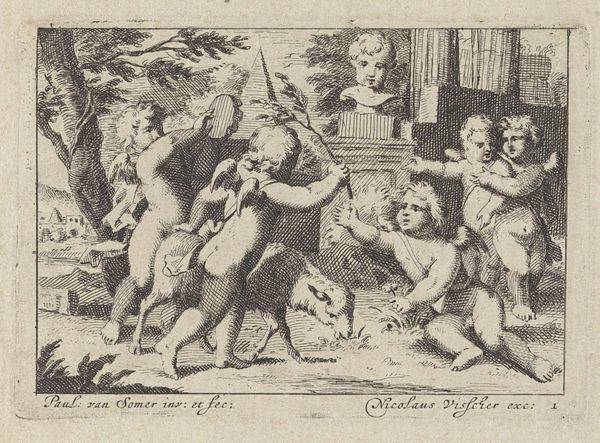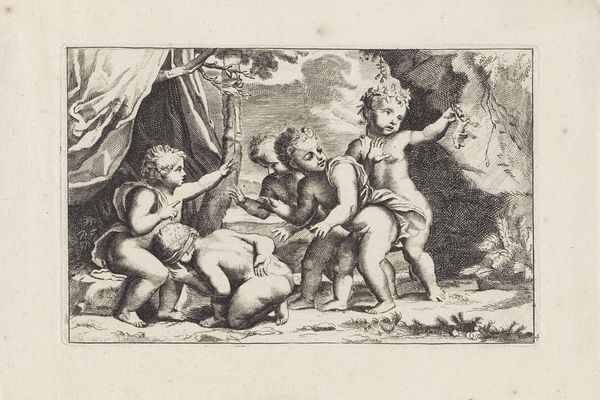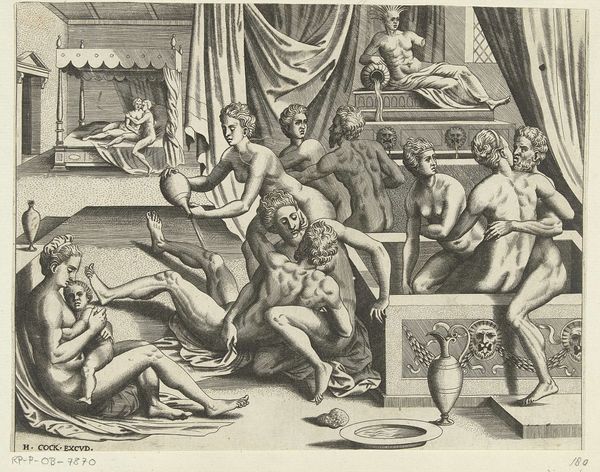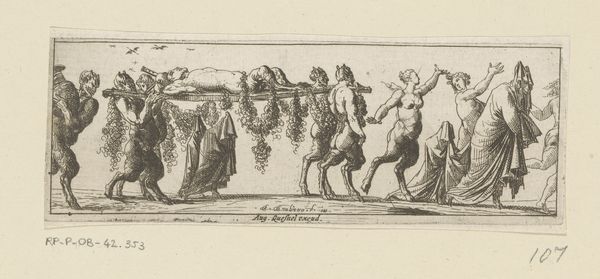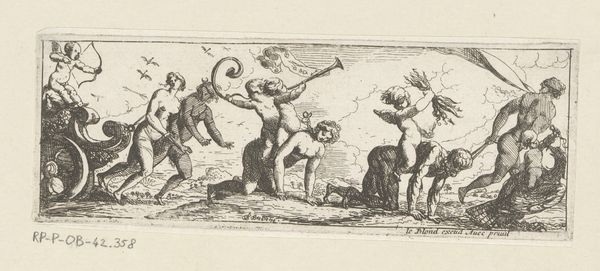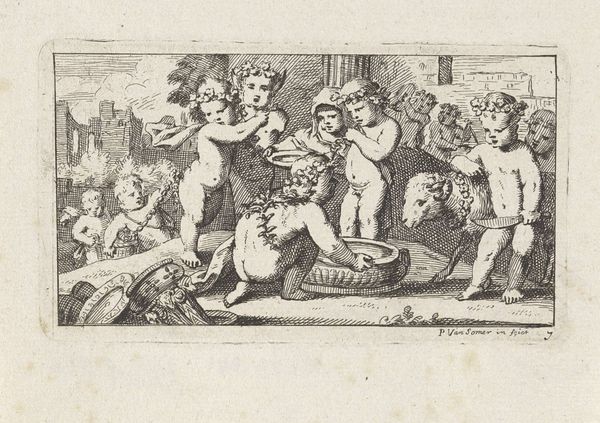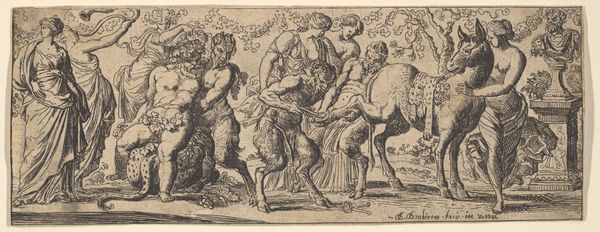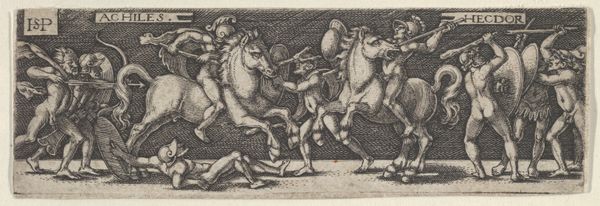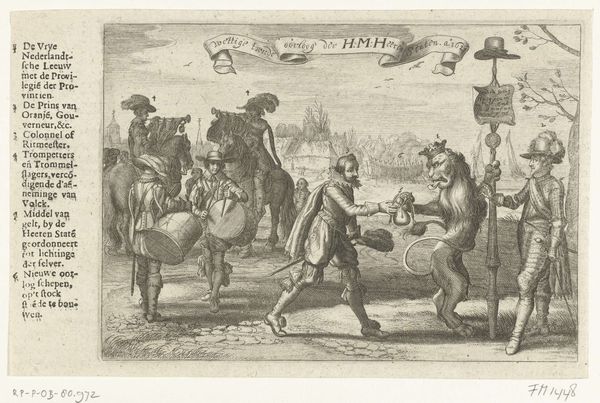
The triumph of the infant Bacchus, who is being pulled along in a chariot by putti playing musical instruments 1545 - 1565
0:00
0:00
drawing, print, engraving
#
drawing
#
allegory
# print
#
figuration
#
11_renaissance
#
history-painting
#
italian-renaissance
#
engraving
Dimensions: Plate: 3 7/8 × 20 7/8 in. (9.9 × 53 cm) Sheet: 4 1/4 × 20 7/8 in. (10.8 × 53.1 cm)
Copyright: Public Domain
This engraving, dating from the 16th century, was made by René Boyvin using a technique called "etching." Here, a metal plate, likely copper or iron, is coated with a waxy, acid-resistant substance. The artist then uses a fine needle to draw through this coating, exposing the metal underneath. Finally, the plate is submerged in acid, which bites into the exposed lines. Boyvin's image shows putti pulling the infant Bacchus, god of wine, in a chariot. The visual effect hinges on line. The incised lines create the details of form and ornament, with hatching indicating shadow and depth. This linear language was critical to the printmaking trade, allowing images to be reproduced and distributed widely. While etching allowed for greater freedom of line than traditional engraving, it still required a high degree of skill and control. The quality of the print depended not only on the artist's design, but also on the precision of the etching process, from the preparation of the plate to the timing of the acid bath. This highlights the importance of both artistic vision and technical expertise.
Comments
No comments
Be the first to comment and join the conversation on the ultimate creative platform.

